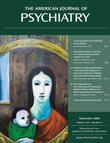Recently I was chatting with a friend, a “hard-core” genetic psychiatrist, at a meeting. We were sharing our stories of recent losses—my mother and his brother. He told me with a bit of chagrin that what helped him the most was a mindfulness practice suggested by a friend. Because of his personal experience with this technique, he installed a mindfulness room for medical students and was taking grief for this action from his more typically medical-minded friends. I had found comfort from playing the piano; music was one way to stay connected with my mother until the very end. My ritual was to play the piano near the nursing home dining room just before dinner time. My mother would sit in her wheelchair near the piano and respond in whatever way her body allowed. The other nursing home residents and nursing home staff would smile, clap, and thank me for making their dinner time so calm and enjoyable. I felt a part of a larger community, dealing with existential issues in a comforting and loving way. Another colleague, an immunologist who was instrumental in bone marrow transplants, was devastated when his own brother died soon after receiving a bone marrow transplant. I referred him to an art therapist, who did a group intervention with his whole family. She walked them through writing a poem about grief that included their connections with all the senses—how grief smelled, felt, sounded, looked, and tasted. He reported that they felt much more connected after this experience. He asked the art therapist to do ongoing work with the staff at the housing center for bone marrow transplant patients and their families near the hospital, and staff turnover has been reduced considerably. They now have a way to manage, or metabolize, their deep feelings engendered by the loss of so many patients, as well as share them together as a group. Another colleague, who treats severely disturbed children, reports that having her dog in the room helps to organize and calm the children enough to participate in therapy.
These personal experiences are the reason why I have become intrigued by some of the complementary and alternative medicine disciplines now available to us practitioners, as well as our clients. Most of these practices are targeted toward the goal of healing, as opposed to curing. As psychiatrists, we seldom cure, but we can often help manage or control our patients’ illnesses. I fear that at times in this era of new technology-focused western medicine, we forget one of our most valuable contributions is to also heal people who still have to deal with whatever suffering their life has presented to them.
If you are looking to understand these resources for your patients or to pursue some skills in adding these techniques to your own practice, then you will find this book informative, scholarly, and full of good references. The 10 chapters cover modalities including mindfulness and meditation, spirituality, poetry therapy, art therapy, psychodrama, dance/movement therapy, music therapy, animal assisted therapy, and touch therapy. Each chapter gives a brief history of the discipline and discusses credentialing bodies for that area. This is helpful if you are working with someone who wants to use a complementary or alternative medicine approach, as you can help them determine if their practitioner has valid credentials. Empirical studies of the area are referenced and discussed. Mindfulness and art therapy have the largest empirical base of support among those presented in this text. The references presented in the chapter on spirituality are focused toward social work and do not include the epidemiologic studies, which support spirituality as a positive health factor. Some of the areas have more structure than others. For example, the chapter on mindfulness covers a range of evidence-based protocols, as well as referencing the less structured uses presented by various spiritual traditions. The chapter on music therapy discusses a wide variety of approaches labeled as music therapy, but there are no standardized interventions that can be evaluated in a clinical trial. Each music therapist may have a different therapeutic background and set of interventions and may need to be evaluated personally. The chapters are not written to provide you with skills to incorporate these techniques into your own practice, but an experienced clinician may be able to use some of the examples presented as tools or prompts for patients stuck in more traditional treatments. Most chapters provide enough detail to yield a good idea of what a complementary and alternative medicine practitioner may provide your patient. The appendix offers further resources in each area should you want to pursue the field further. Understanding these modalities can help you recommend additional approaches for your patients or know when some may be useful during personal life events.

